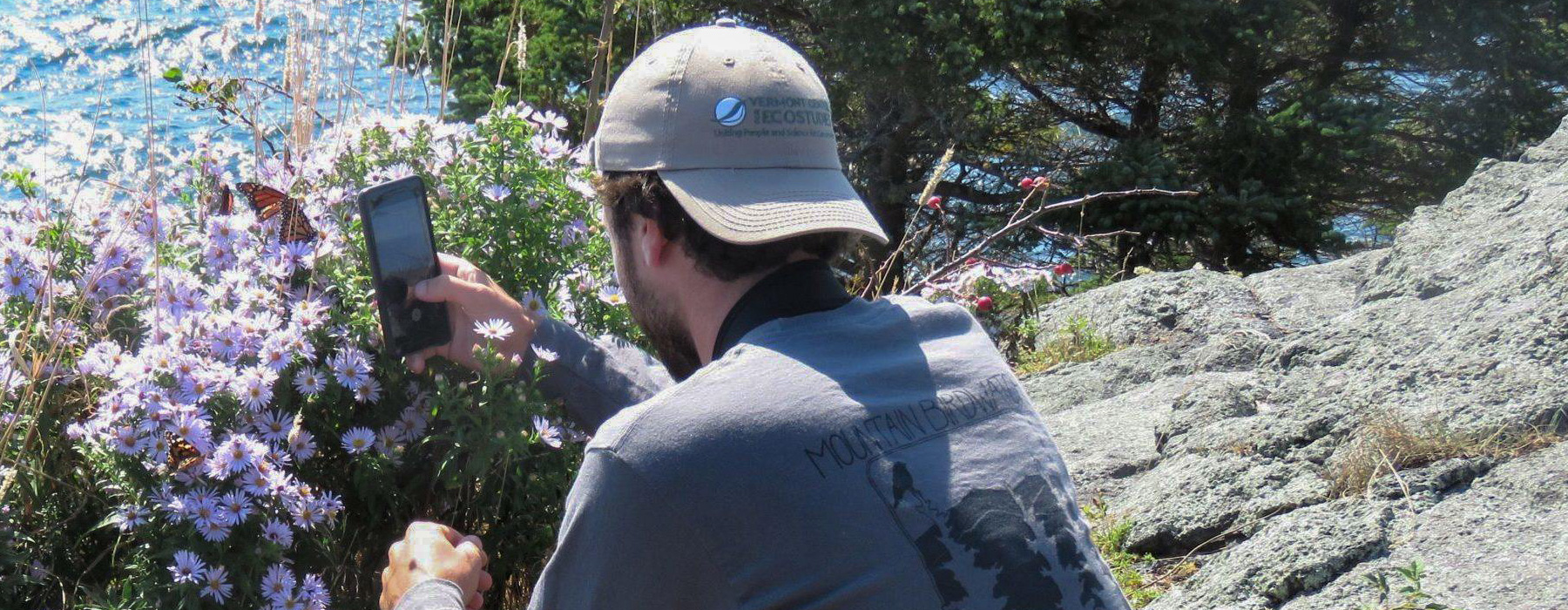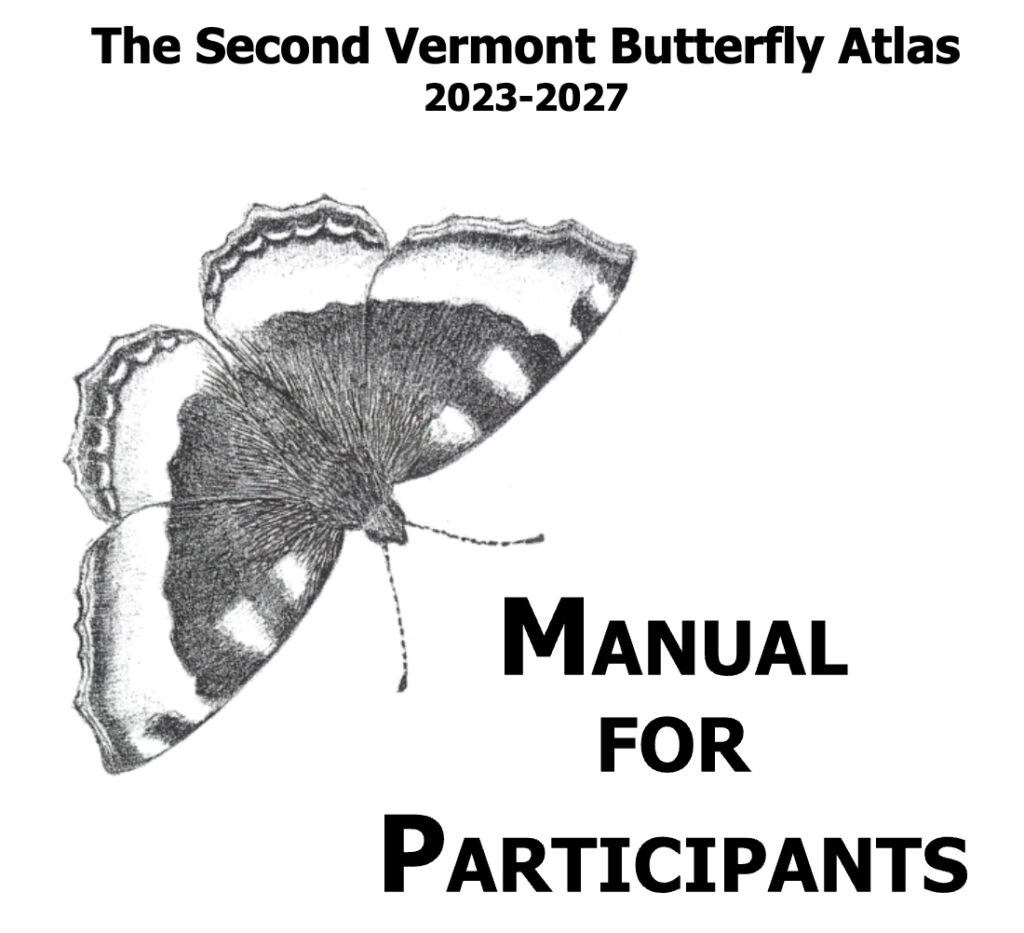From the common to the rare, we need your help in recording butterflies in Vermont.
Everyone knows what a butterfly looks like! Whether you help with full surveys or just snap photos of those you happen to see, it's easy to contribute to the Vermont Butterfly Atlas via eButterfly.
1. Join eButterfly.
Download the app to your phone, or head to e-butterfly.org. Create an account.
2. Do a practice survey in a nearby green space.
In the app, click Start Checklist and go searching for butterflies! (If you hate phone apps, you can always take out a trusty notebook to record your checklist on paper and enter them later via the eButterfly website.)
When you see a butterfly, take a quick picture with your phone’s photo app or your camera. Try to get closer and take more pictures from multiple angles with wings open and closed. A blurry photo is better than no photo!
If you’re not sure what butterfly it is, eButterfly can help you ID it. Open the app, click the butterfly camera icon, choose the camera icon, select Allow Full Access, choose the best photo to upload. Click Identify, choose the top row with the most confidence. Select Add to Checklist. (It’s okay if you got it wrong, experts will doublecheck your observations.)
If you don’t get a picture, that’s okay! Type what you saw in the search bar. It can be anything from “butterfly”, to its family (swallowtail), genus (tiger swallowtails), or species (Canadian Tiger Swallowtail).
Click on the appropriate result, put in the number you saw under Count, select Public for Data Usage (Confidential or Sensitive is for endangered butterflies), add in Field Notes like what color it was and what plant it was on, upload any photos, and click Done.
When you’ve finished your survey, click Next.
Choose your type of Survey:
- Traveling: You’re walking or hiking.
- Area Survey: You’re looking around a certain area like a yard or meadow.
- Incidental: You’re not surveying, but see a butterfly when you’re outside.
Doublecheck Start Time and Date are correct. Enter your Party Size: How many people are in your group? Fill in how long you were surveying under Duration.
Answer the two final questions, and click Finish on the top right.
3. Choose a place to go butterflying.
- Adopt a priority block. Visit VCE’s Block Mapper to see where we need surveys and sign up to survey a priority block near you. Check out Google Maps and AllTrails for local public-access lands inside your block, including town and state land, hiking trails, nature preserves, or old cemeteries. Knock on doors and make a new friend, or ask a farm if you can survey on their property. Visit the block at least once a month until October. You’re aiming for 40 species total by the end of 2027.
- Blockbusting roadtrip. Can’t commit to one block? Try out blockbusting and visit a lot! Find an unadopted block and stop by to survey. Explore a new hiking trail, a new conservation area, or add a survey stop to your regularly planned outdoor adventure. Then do it again for another block.
- See a butterfly and share it (incidental observations). When you see a butterfly, snap a picture and upload to either eButterfly (accepts both photo records and notes of what you saw) or the Vermont Atlas of Life project on iNaturalist (needs photo records). Do this anytime, anywhere: your garden, on a walk, or on your way to the store.
4. Grab your gear and go!
Want to become an expert butterfly-er? Check out a more in depth Participant’s Manual to learn the ins and outs of volunteering to survey butterflies.








